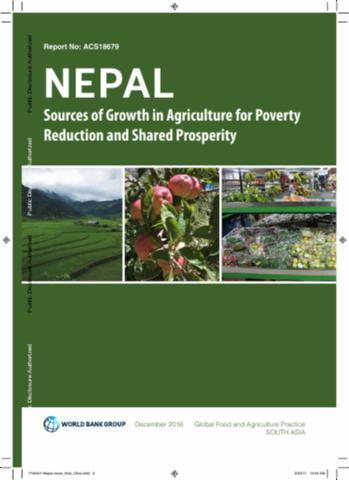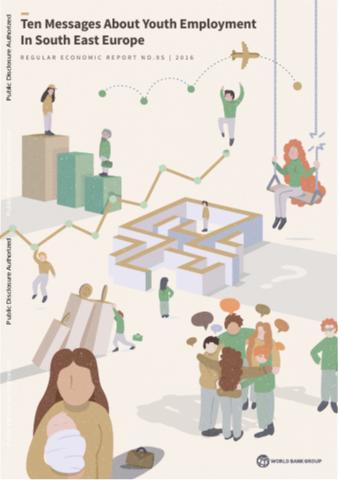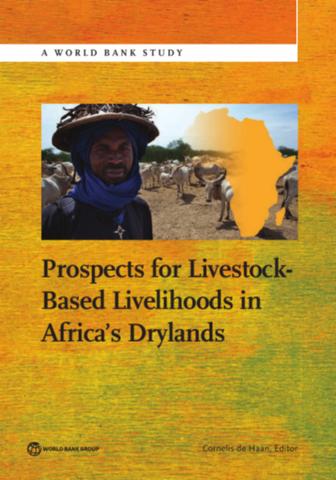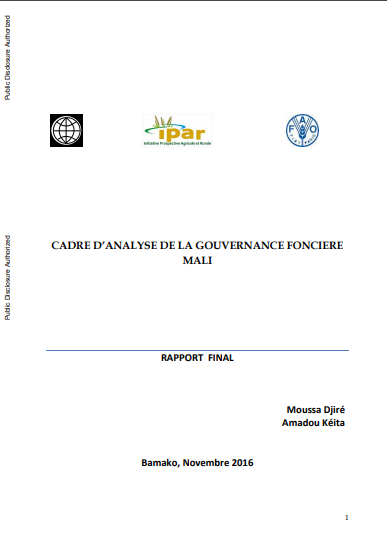The World Bank is a vital source of financial and technical assistance to developing countries around the world. We are not a bank in the ordinary sense but a unique partnership to reduce poverty and support development. The World Bank Group has two ambitious goals: End extreme poverty within a generation and boost shared prosperity.
- To end extreme poverty, the Bank's goal is to decrease the percentage of people living on less than $1.25 a day to no more than 3% by 2030.
- To promote shared prosperity, the goal is to promote income growth of the bottom 40% of the population in each country.
The World Bank Group comprises five institutions managed by their member countries.
The World Bank Group and Land: Working to protect the rights of existing land users and to help secure benefits for smallholder farmers
The World Bank (IBRD and IDA) interacts primarily with governments to increase agricultural productivity, strengthen land tenure policies and improve land governance. More than 90% of the World Bank’s agriculture portfolio focuses on the productivity and access to markets by small holder farmers. Ten percent of our projects focus on the governance of land tenure.
Similarly, investments by the International Finance Corporation (IFC), the World Bank Group’s private sector arm, including those in larger scale enterprises, overwhelmingly support smallholder farmers through improved access to finance, inputs and markets, and as direct suppliers. IFC invests in environmentally and socially sustainable private enterprises in all parts of the value chain (inputs such as irrigation and fertilizers, primary production, processing, transport and storage, traders, and risk management facilities including weather/crop insurance, warehouse financing, etc
For more information, visit the World Bank Group and land and food security (https://www.worldbank.org/en/topic/agriculture/brief/land-and-food-security1
Resources
Displaying 231 - 235 of 4906Nepal
Agriculture contributes about 35 percent to the Gross Domestic Product (GDP) of Nepal. But growth in the sector has been quite volatile in the last decade, tothe extent that the lowest and highest growth rates were recorded in consecutive years. Nepal agriculture is characterized by relatively low yields compared to neighboring countries. Furthermore,land is disproportionately allocated to grain staples (rice, maize, wheat, millet, barley, and buckwheat),despite fruits and vegetables showing relatively higher yields and higher growth in consumption.
Ten Messages About Youth Employment in South East Europe
Today, nearly half of youth in the six South East European countries (SEE6) are not in the labor market, and one quarter is inactive—not in employment, education, or training. These poor outcomes partly reflect a difficult recovery in SEE6 from the 2008 global financial crisis, which sent already high youth unemployment soaring to new heights. This paper presents 10 evidence-based messages on the youth employment challenges in SEE6. The 10 messages demonstrate that many factors disproportionately affect jobless youth.
South East Europe Regular Economic Report, No. 9S, Fall 2016
Today, nearly half of youth in the six South East European countries (SEE6) are not in the labor market, and one quarter is inactive—not in employment, education, or training. These poor outcomes partly reflect a difficult recovery in SEE6 from the 2008 global financial crisis, which sent already high youth unemployment soaring to new heights. This paper presents 10 evidence-based messages on the youth employment challenges in SEE6. The 10 messages demonstrate that many factors disproportionately affect jobless youth.
Prospects for Livestock-Based Livelihoods in Africa's Drylands
Prospects for Livestock-Based Livelihoods in Africa’s Drylands examines the challenges and opportunities facing the livestock sector and the people who depend on livestock in the dryland regions of Sub-Saharan Africa.
Cadre d’analyse de la gouvernance fonciere Mali (French)
Cadre d’analyse de la gouvernance fonciere Mali (French)










